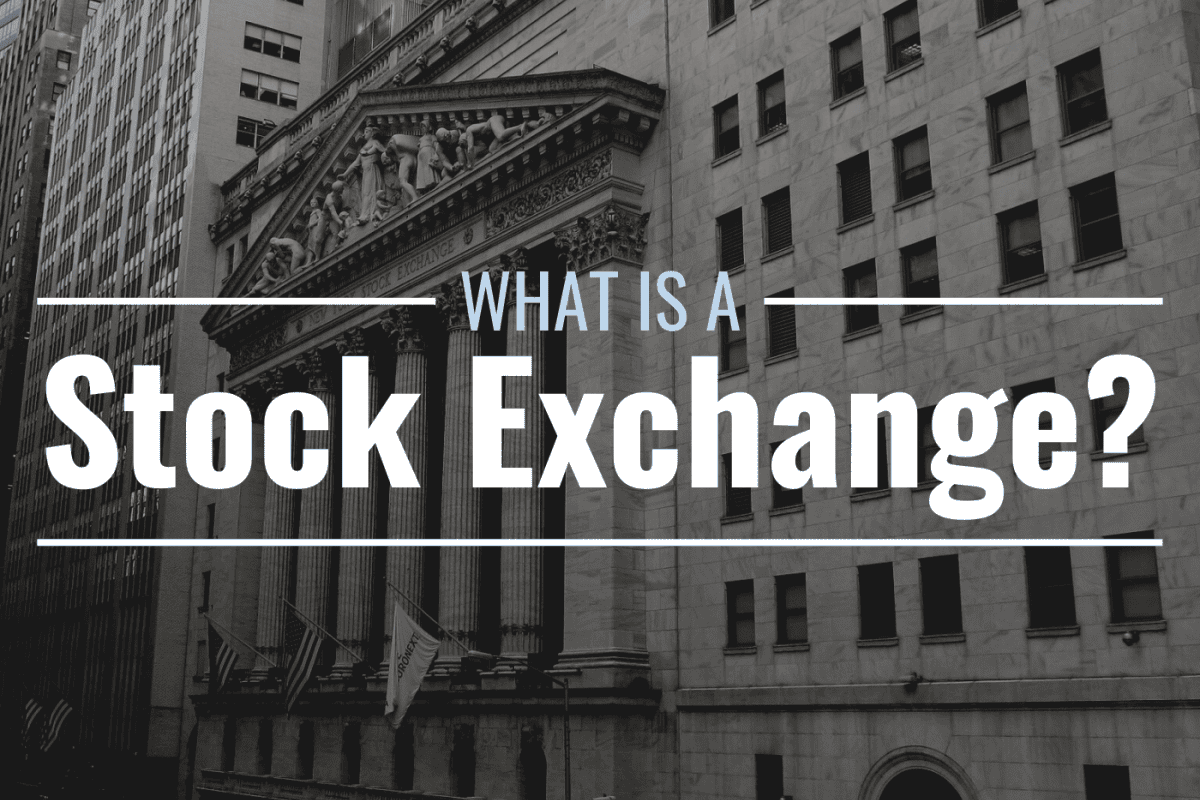Every day, thousands of companies are traded in the stock market and crores of rupees change hands in the financial markets. Much of this activity is carried out through highly regulated institutions known as stock exchanges. These platforms serve as critical centres for buying and selling securities. They shape how capital flows across the country. Furthermore, with international investments now possible, the role of stock exchanges has expanded to include the facilitation of capital movement across the globe.
Stock exchanges connect companies in different stages of their journey with the opportunity to raise funds for their business. They are also pivotal for investors seeking long-term gains or quick profits. In the broader context of the global economy, these exchanges act as economic indicators. Their movements reflect the prevailing investor sentiment, economic health and geopolitical developments. This is why you must know what a stock exchange is and how it functions.
In India, we have two major stock exchanges — the NSE (National Stock Exchange) and the BSE (Bombay Stock Exchange). This article discusses the functions of a stock exchange, how it works and why it is important, so you can appreciate that an exchange is not just a place where shares are traded.
What is a Stock Exchange?
A stock exchange is a regulated marketplace where buyers and sellers trade financial securities like bonds, equity shares and derivatives. It ensures transparency in trading, fair pricing for the securities and seamless execution of trades. One of the primary functions of a stock exchange is to provide a platform where companies can raise capital by issuing shares to the public. Additionally, it also regulates trading and helps market participants deploy their capital in a secure manner.
Many people confuse the stock market and the stock exchange, but they are not the same. A stock market is the broader system of trading all listed shares. It includes the different types of stock exchanges. In simple terms, the stock market is the ecosystem, and each exchange is a specific venue within that system.
How Does a Stock Exchange Work?
If you want to learn about what a stock exchange is, you must also become familiar with how it works. Since stock exchanges perform various roles, their workings are also highly nuanced. Let us explore the different facets of the typical stock exchange in India.
An Overview of the Trading Mechanism Connecting Buyers and Sellers
A stock exchange functions like a digital marketplace where buyers and sellers interact through brokers. They can place buy or sell orders via registered brokerage service providers, who route these orders to the exchange. The role of a stock exchange here is to ensure fair pricing, timely execution and regulatory oversight. This mechanism ensures market integrity and boosts investor confidence by maintaining a transparent trading environment.
The Listing Process: How Companies Go Public on the Stock Exchange
One of the main roles of a stock exchange is to ensure that only qualified companies with proper disclosures are listed for trading. This also expands the scope of what a stock exchange is — not just a trading platform but also a way to ensure market quality. Through this process, companies gain access to public capital and investors gain access to investment opportunities across the different types of stock exchanges that operate in the market.
Check out the listing process for the NSE and the BSE in India.
- Step 1: Meet the Eligibility Criteria
The first step for any company wanting to have its shares traded publicly is to meet the eligibility criteria. They typically include financial disclosures, minimum capital requirements and other strict governance standards.
- Step 2: File the DRHP
Once eligible, the company files a draft red herring prospectus (DRHP) with the regulatory authority. This document outlines the details of the initial public offer (IPO).
- Step 3: Obtain Approval and Launch the IPO
After obtaining the necessary approvals, the company should decide the price band and open its IPO to the public.
- Step 4: Receive the Bids and Allot the Shares
Investors bid during the offer period, and once subscriptions are complete, shares must be allotted. Finally, the company is listed, and trading begins.
Order Matching System: How Trades Are Executed
Order matching is another important aspect of how stock exchanges in India work. Once the orders are placed, the exchange uses an electronic order matching system to pair sell and buy orders based on price and time priority. This system is automated to ensure fairness and efficiency. It is a critical part of the role of a stock exchange today.
Functions of a Stock Exchange
As we have seen so far, a stock exchange is not just a platform for buying and selling securities. It plays a much larger role in the financial ecosystem. It supports the flow of capital, encourages investments and builds investor confidence. Here are some of the important functions of a stock exchange that make it essential to any economy:
Capital Formation
The role of a stock exchange in capital formation stems from how it helps companies raise funds from the public. By issuing shares, businesses can finance their expansion, innovation and operations without relying solely on debt. This supports long-term economic growth.
Providing Liquidity
Another key function of a stock exchange is to ensure liquidity by allowing investors to easily enter and exit positions. The presence of active buyers and sellers allows for quick transactions at fair prices. This makes it easier for investors to convert shares into cash.
Price Discovery
When you’re getting to know what a stock exchange is, you will also see that these bourses are crucial for determining the market price of securities. This is because, in continuous trading, prices reflect demand, supply and market sentiment, leading to real-time valuation.
Investor Protection
The functions of a stock exchange also include safeguarding investors’ interests through strict regulations and disclosure requirements. Exchanges enforce listing norms and monitor trading activity. This maintains transparency, reduces fraud and protects investors from malpractices.
Economic Indicator
Among the types of stock exchanges, all serve as indicators of economic performance. Market trends reflect broader financial health, business cycles, and investor sentiment. Rising or falling indices help policymakers, analysts, and the public understand the direction of the economy.
Types of Stock Exchanges
There are different types of stock exchanges depending on their location, scope and the method of trading supported. Let us take a closer look at these common types of stock exchanges:
National Exchanges
National exchanges operate within a country’s regulatory framework. They cater primarily to domestic investors and companies. The NSE and the BSE are examples of national exchanges in India. The roles of these stock exchanges include capital formation and investor participation within national boundaries.
International Exchanges
International exchanges like the NYSE and NASDAQ facilitate global trading and cross-border listings. They allow international investors to access foreign companies. To better understand what a stock exchange is includes understanding how such platforms influence worldwide capital flows and investor behaviour.
Physical Exchanges
Physical exchanges involve floor-based trading, where brokers meet to execute orders manually. The New York Stock Exchange (NYSE) is a classic example of this type of exchange. Although now less common, this model was foundational in historically shaping the functions of a stock exchange.
Electronic Exchanges
Electronic exchanges like the NSE and NASDAQ use automated systems to match buy and sell orders in real time. These types of exchanges offer many benefits like quicker order execution, greater transparency and generally wider accessibility. This is why such exchanges have become the standard in most markets today.
Decoding the Regulatory Environment for Stock Exchanges
When you are learning about what a stock exchange is, you will see that it also includes recognising the importance of governance and accountability. Stock exchanges operate under strict regulatory oversight to ensure transparency, fairness, and investor protection. In India, the Securities and Exchange Board of India (SEBI) oversees the trading of all listed companies. In the US, the Securities and Exchange Commission (SEC) plays a similar role.
These regulators define the functions of a stock exchange by enforcing disclosure norms and compliance standards. Without a strong regulatory framework, financial markets can become vulnerable to price manipulation, insider trading and fraud. Regulatory bodies ensure that investors have access to updated information. This helps maintain trust and integrity across the different types of stock exchanges operating in the trading ecosystem.
Stock Market vs Stock Exchange: The Key Differences
The stock market vs stock exchange comparison can be confusing to some people. Beginners, in particular, may use these terms interchangeably, but they are not the same. A stock market refers to the broader ecosystem where securities are traded, while a stock exchange is a specific platform where those trades happen.
Here is a clear comparison clarifying the stock market vs stock exchange debate.
Particulars | Stock Market | Stock Exchange |
Meaning | The overall system where stocks are traded | A specific market where trading takes place |
Scope | Broad (includes all exchanges and participants) | Narrow (limited to one trading platform) |
Function | Represents market trends and investor sentiment | Facilitates actual buying and selling |
Examples | Indian stock market, US stock market etc. | NSE, BSE, NYSE, NASDAQ etc. |
Participants | Investors, traders, brokers and exchanges | Companies, brokers and investors |
Regulation | Regulated by national authorities | Operates under a regulatory body like SEBI or SEC |
Securities Included | Includes listed and unlisted activity | Focuses on listed securities only |
Conclusion
Understanding what a stock exchange is helps demystify how financial markets function. From facilitating capital flow to setting benchmarks for economic health, these platforms impact far more than just investors. Their presence assists businesses, supports government policy and contributes to national economic development.
As financial systems grow more interconnected, the stock market vs stock exchange differences become even more relevant. By recognising what these two terms mean and getting to know the functions of a stock exchange beyond just buying and selling securities, you will be better equipped to navigate trading and investments.




 Easy & quick
Easy & quick
Leave A Comment?